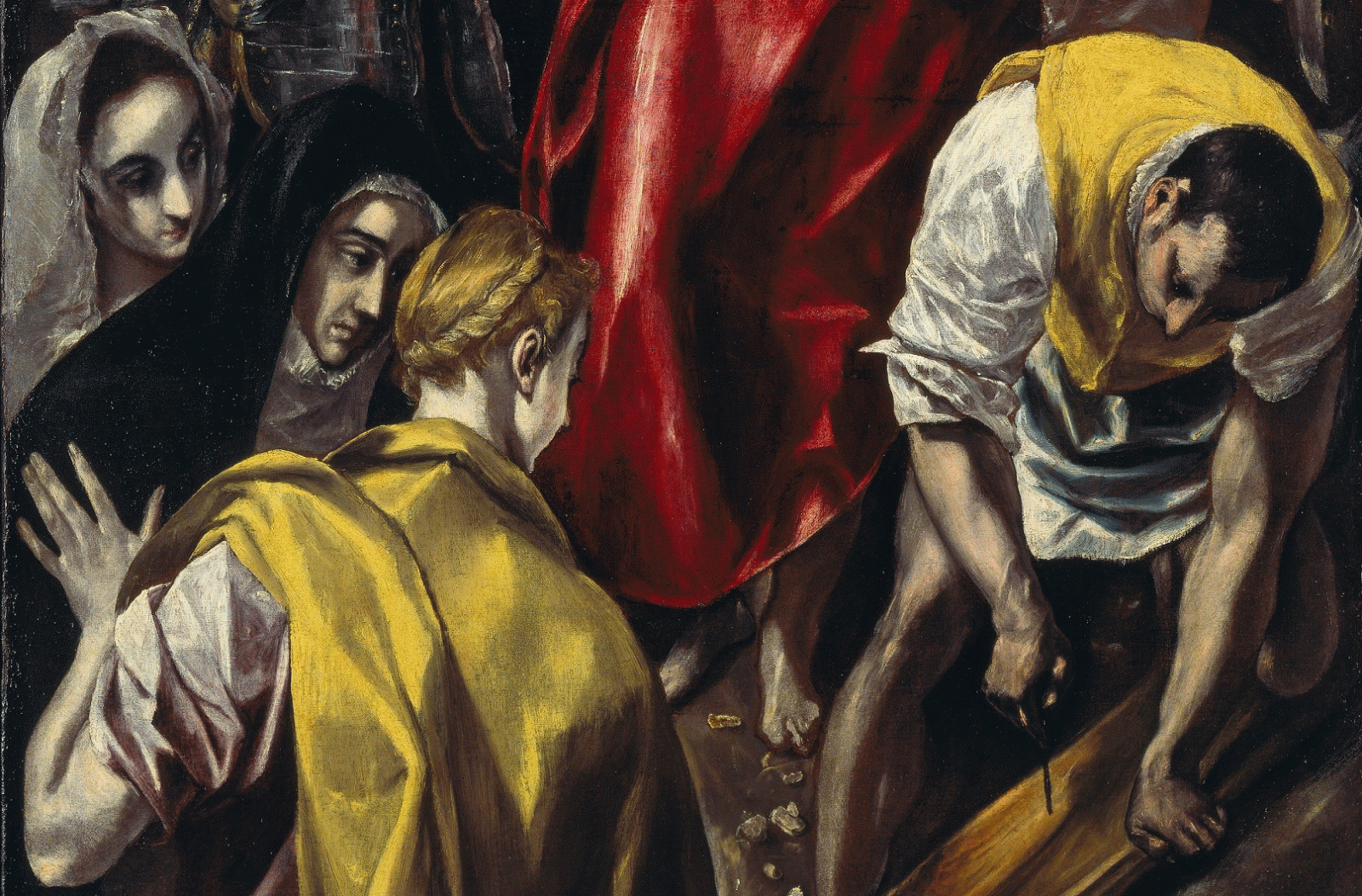KHI 2021+ Lecture Series
Chiara Franceschini:
From near or far? Contested Images and the Micro-Geographies of the Disrobing of Christ

El Greco (Domenikos Theotokopoulos) and Workshop, The Disrobing of Christ (detail), c. 1580-1595. Bayerische Staatsgemäldesammlungen – Alte Pinakothek, Munich © Blauel Gnamm – Arthothek
Why and how have images been agents of both connection and contention on the variable maps of early modernity? Discussions on and in front of images have left crucial, but only scattered, written traces. However, the visual and material archives of the past tell us that artworks and artists were just as likely to impose their own rules and standards through the establishment of new trends or the challenge of local modes, iconographies, materials, and mindsets. Although issues such as censorship and iconoclasm have received much attention, the active roles of images—and of clusters of images—as agents of disturbance and cultural difference still need to be measured on different scales, especially in relation to the increased mobility of the people and objects of early globalization. By focusing on the case of El Greco’s Disrobing of Christ and the motifs for its controversial reception in Toledo, this talk addresses interconnections between image normativity, geographies, space and gender relations in a transformative epoch. This case is part of a larger comparative inquiry that reconsiders and analyses well-known examples, as well as newly discovered cases, of artworks that challenged local establishments and horizons of expectations as well as ethical, social or political norms in different places in Europe, the Mediterranean, and beyond. Mapping contested images through a “micro-geographical” approach can shed light on stratified perceptions in their own respective environments as well as on cultural diversity and dis/connections in comparative perspectives, contributing to sharper understandings of current reactions to unbearable images.
Chiara Franceschini is Professor for Art History at the Ludwig-Maximilians-Universität in Munich. She works on Italian and European art in their Mediterranean and larger connections, the conflicts and the convergences generated by images in premodern spaces and contexts, the visual cultures and the geographies of the sacred in comparative perspectives, art semantics, historiographies and theories. The author of numerous studies on Renaissance art and culture as well as of Storia del limbo, she recently co-edited and edited Chapels in Roman Churches and Contested Forms. Her research was supported by the British Academy, the Warburg Institute, I Tatti, the Italian Academy, the FMSH/EHESS in Paris. She currently directs the ERC project SACRIMA, “The Normativity of Sacred Images in Early Modern Europe”, writes on art and Inquisition in Sicily, Spain and Italy and is Co-Principal Investigator of the Waseda University-DAAD Partnership “Early Modern Sacred Images in Japan and Europe: Contact, Comparison, Conflict.”
This talk is part of the KHI 2021+ Lecture Series, organized by the doctoral and postdoctoral fellows, in collaboration with scientific staff and senior scholars of the Institute. It is envisioned as a forum to reflect on the futures of Art History through conversations with innovative voices in the discipline, working in different areas but sharing methodological concerns.
01 settembre 2021, ore 15:00
KHI 2021+ Lecture Series
The event takes place online.
Avviso
Questo evento viene documentato fotograficamente e/o attraverso riprese video. Qualora non dovesse essere d’accordo con l’utilizzo di immagini in cui potrebbe essere riconoscibile, da parte del Kunsthistorisches Institut in Florenz a scopo di documentazione degli eventi e di pubbliche relazioni (p.e. social media) la preghiamo gentilmente di comunicarcelo.


